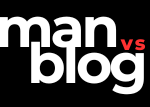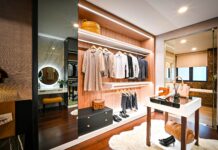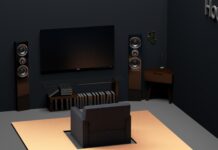Interviews are crucial moments for job seekers, as they represent opportunities to showcase their skills and expertise to potential employers. However, besides being prepared to answer the interview questions, candidates must also pay attention to their attire as it can affect the interviewer’s perception of their professionalism and fit for the role. This article will provide guidance on the dos and don’ts of interview attire to help candidates make a good first impression.
Dressing for success
Dos of interview attire
- Dress conservatively: Choose conservative clothing that fits well and makes you feel comfortable. It shows that you take the interview seriously and respect the interviewer’s time.
- Research the company’s dress code: Do some research about the company’s dress code and dress one level above it. For example, if the company’s dress code is business casual, dress in business attire for the interview.
- Wear solid colors: Choose solid colors like black, navy blue, gray, and white for your attire. Avoid bright colors and flashy patterns as they may be distracting.
- Wear comfortable shoes: Wear shoes that are comfortable and in good condition. Avoid wearing sneakers, sandals, or flip-flops to interviews.
- Bring a portfolio: Carry a portfolio or a briefcase to the interview. It will make you look organized and professional.
Don’ts of interview attire
- Don’t wear revealing clothing: Avoid clothing that is too revealing or tight-fitting. It can be distracting and may give off the wrong impression.
- Don’t wear casual clothing: Avoid wearing casual clothing like shorts, t-shirts, or jeans to an interview. Even if the company has a relaxed dress code, it’s best to dress up for the interview.
- Don’t wear strong perfumes or colognes: Avoid wearing strong perfumes or colognes as they can be overpowering and may cause discomfort to the interviewer.
- Don’t over-accessorize: Avoid over-accessorizing with jewelry, belts, or scarves. It can be distracting and may take away from your professionalism.
- Don’t forget to iron your clothes: Make sure your attire is clean and ironed before the interview. Wrinkled clothing can make you look unprofessional.
Industry-specific attire
Corporate attire
For corporate interviews, it’s best to dress in formal business attire. Men should wear a suit and tie, while women should wear a dress or a suit. Accessories should be minimal, and shoes should be polished and professional.
Creative industries attire
For creative industries like advertising, fashion, or graphic design, it’s acceptable to dress more creatively. Men can wear a suit without a tie or a collared shirt with khakis, while women can wear a dress, a skirt with a blouse, or dress pants. However, it’s still essential to look professional and polished.
Business casual attire
For companies with a business casual dress code, it’s best to dress in business attire for the interview. Men can wear slacks, a button-down shirt, and dress shoes, while women can wear a blouse and a skirt or dress pants. Avoid wearing denim or sneakers to the interview, even if the dress code allows it.
Accessorizing for interviews
Dos of accessorizing
- Keep it simple: Accessorize your attire with minimal jewelry and simple accessories. A watch, a belt, or a small piece of jewelry can add a touch of professionalism to your outfit.
- Match your accessories: Match your accessories to your attire. For example, wear a black belt with black shoes, or silver earrings with a silver watch.
- Use a professional bag: Carry a professional bag, such as a briefcase or a leather tote. Avoid using backpacks or casual bags to the interview.
Don’ts of accessorizing
- Don’t wear distracting jewelry: Avoid wearing jewelry that is too big or too flashy. It can be distracting and may take away from your professionalism.
- Don’t mix metals: Avoid mixing metals like gold and silver. Stick to one metal tone for a cohesive look.
- Don’t carry a backpack: Avoid carrying a backpack or a gym bag to the interview. It can be too casual and unprofessional.
Grooming and hygiene
Dos of grooming and hygiene
- Practice good hygiene: Make sure you shower, brush your teeth, and use deodorant before the interview. It’s essential to look and smell clean.
- Keep your hair neat: Style your hair neatly and avoid using excessive hair products. Long hair should be tied back or styled away from the face.
- Trim your nails: Make sure your nails are clean and trimmed. Avoid wearing chipped nail polish or bright colors.
Don’ts of grooming and hygiene
- Don’t wear excessive makeup: Avoid wearing excessive makeup or bright colors. Stick to neutral tones and a natural-looking makeup style.
- Don’t show up with bedhead: Avoid showing up to the interview with messy or unkempt hair. It can be distracting and may give off the impression that you’re not serious about the job.
- Don’t forget to shower: Avoid skipping a shower before the interview. Bad body odor can be off-putting to the interviewer.
Conclusion
In conclusion, dressing appropriately for an interview is crucial to making a good first impression. Candidates should choose conservative attire, research the company’s dress code, and avoid wearing revealing or casual clothing. It’s also important to accessorize and groom appropriately, keeping in mind industry-specific dress codes and good hygiene practices.
FAQs
Can I wear a suit to a business casual interview?
Yes, it’s best to dress one level above the company’s dress code, so a suit would be appropriate.
Can I wear jeans to a creative industry interview?
It depends on the company’s dress code. However, it’s best to dress creatively while still looking professional.
Should I wear high heels to an interview?
It’s best to wear comfortable shoes to the interview. If you’re not comfortable wearing high heels, it’s okay to wear flats or low-heeled shoes.
Can I wear a hat to an interview?
It’s best to avoid wearing hats to interviews, as they can be distracting and may take away from your professionalism.
How important is grooming for an interview?
Grooming is essential for making a good first impression in an interview. It shows that you take the interview seriously and respect the interviewer’s time.




























